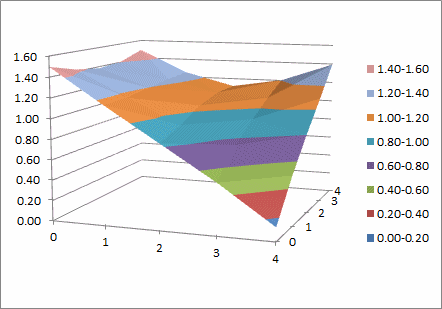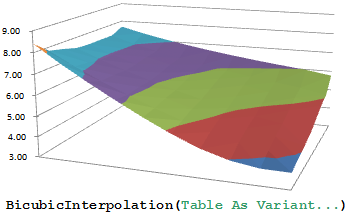An Entire 3D Surface from a Few Measured Points
- An investment banker needs to create an entire volatility surface from a handful of derivatives trades that took place today.
- A chemist needs to know the temperature near the center of a reaction chamber based on only a few temperature measurements scattered around its perimeter.
- An engineer needs to model something with a smooth function of two variables, but he doesn’t know the function and all he has are a few dozen noisy measurement points.
How do they do it? By regularizing their 3D data of course!
The first part of this article showed how we use bilinear interpolation to relate arbitrary input points to locations on an output grid. Now we will look at the fidelity equations, set up second-derivative equations for the 3D data, and find the least-squares solution. The result is a regularized surface in 3D.
For those who like to see the details, the example spreadsheet is available for download. Continue reading
 How to Regularize 3D Data
How to Regularize 3D Data